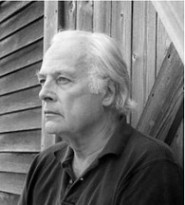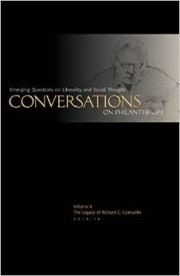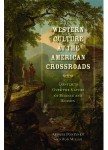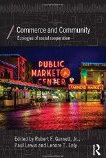Philanthropy, Economy, and Human Betterment: A Conversation with Kenneth Boulding
The consensus among economists today, and indeed since Adam Smith, is that philanthropy plays no essential role in the formal theory or institutional structure of a complex, decentralized economy. As a bundle of noncommercial institutions and processes, philanthropy—“voluntary giving and association that serves to promote human flourishing” (Ealy 2005, 2)—falls outside the domain of standard economic theory (Mirowski 2001; Nelson 2006, 51). This theoretical omission is buttressed by the claim that philanthropic sectors are economically trivial in comparison with commercial and governmental sectors as generators and redistributors of wealth (Salamon 1995). 1
The economist Kenneth Boulding dissented from this consensus. Through a series of works written over two decades, Boulding crafted a suggestive reformulation of economic theory in which social cooperation and human betterment are promoted through a “grants economy” (which includes philanthropy) as well as an “exchange economy” (Boulding 1962, 1965, 1973, 1981). 2 At the same time, Boulding’s treatment of markets and philanthropy as separate spheres—the former propelled by self-interest, the latter by benevolence or moral sentiments—served to reinforce the economic denigration of philanthropy that Boulding ultimately wished to overcome.
My goal in this paper is to revise and strengthen Boulding’s treatment of the philanthropy/economy relationship by employing his own historiographic device, the “principle of the extended present” (Boulding 1971). The extended present, as Boulding defines it, is a space of conversation and mutual learning between canonical works and contemporary readers. Boulding developed this idea in his 1971 paper “After Samuelson, Who Needs Adam Smith?”, in which he argued that modern economists still need Adam Smith because his work contains untapped insights that challenge and complement present-day theories (Boettke 2000). I use the extended present here as a tool for putting Boulding’s work in dialogue with two innovative lines of contemporary thinking: the emerging literature of “new philanthropy studies” 3 and the wave of recent economic scholarship calling for an expanded view of economics and the economy, beyond the “separate spheres” treatment of self-interest and benevolence or the economy and civil society.4 By rereading Boulding in light of these contemporary literatures, and vice versa, I hope to contribute to the larger project of theorizing the central place of philanthropy in the “civil economies” of the twenty-first century.
The paper proceeds in four parts. The first section situates Boulding’s theory of philanthropy as a critical response to the Stiglerian, “Chicago” view of human nature, economics, and Adam Smith. The second section examines the theoretical shortcomings of Boulding’s formulation, particularly his treatment of markets and philanthropy as separate systems. The third section proposes a reformulation of Boulding’s scheme, inspired by an extended-present dialogue between Boulding and contemporary scholars of philanthropy and economics. The concluding section (“After Adam Smith, We Still Need Boulding”) reflects on Boulding’s enduring contribution to Adam Smith’s unfinished project: the recognition of philanthropy as a vital means of promoting human welfare through voluntary action.




